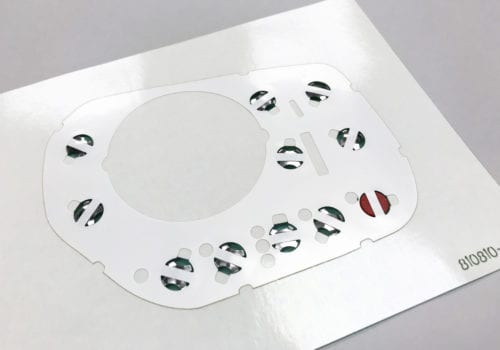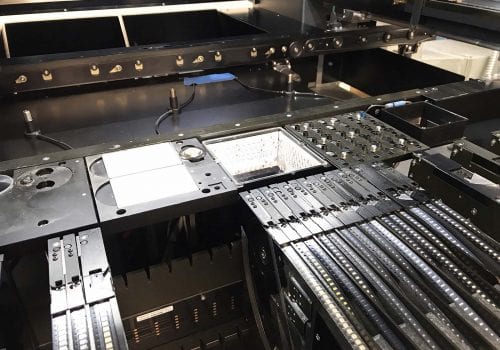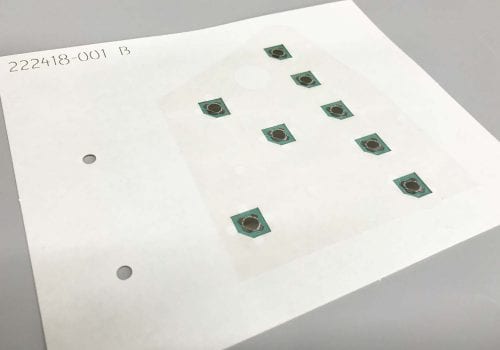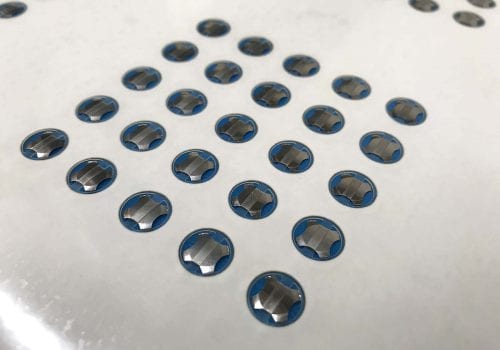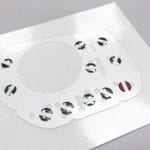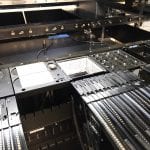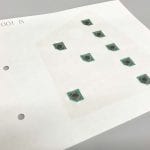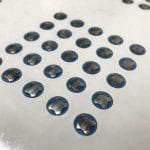At General Label, we offer metal dome arrays to provide tactile feedback with our membrane switches. In addition, General Label can provide custom dome arrays as a standalone part that can be applied to circuit boards. These arrays carry a number of advantages—they’re durable, easy to integrate into a wide variety of switches, and highly customizable.
What Are Metal Domes?
Metal domes are a type of tactile switch. Constructed with stainless steel, they provide tactile feedback when a switch is pressed. When integrated into membrane switches, they create tactile membrane switches. When applied to a circuit board, these create a tactile feel and can be used to replace board mounted switches.
Contrary to the name, metal domes are not necessarily circular—though the circular configuration is perhaps the most common. At General Label, we offer several types of metal domes, including:
- Circular
- 4 Legs
- Triangular
- Oblong
We also offer custom-built metal domes to fit the exact specifications of your product—our manufacturing facility can custom-cut almost any shape and size.
What Is a Metal Dome Array?
A metal dome array is just what the name implies—several metal domes lined up together in an array on a polyester film. This polyester film (though PET and other plastics are sometimes used) is lined with adhesive. The adhesive backing can be removed and applied directly onto a circuit board (often a printed circuit board, or PCB).
Metal dome arrays are used in many of our membrane switches—tactile membrane switches provide a number of advantages, and metal domes are the best way to incorporate tactility into your switches.
How does a metal dome array work?
At General Label, we integrate metal dome arrays into membrane switches, a type of user interface. The metal dome arrays are positioned over contact points on a flex circuit or circuit board—when a dome is pressed, it makes contact with the flex circuit or circuit board, completing the circuit.
The main advantage of metal dome arrays is the tactile feedback they offer—while membrane switches can connect and break circuits without metal domes, these domes are the most durable way to provide valuable tactile feedback to users.
Applications of Metal Dome Arrays
To understand the application of metal dome arrays, it’s important to understand how membrane switches are built.
Switches are built in layers—the metal dome array is one layer of the membrane switch. You’ll also find:
- The graphic overlay the user interfaces with
- The adhesive to bind the overlay to the top circuit layer
- A circuit layer
- A spacer
- A rear adhesive layer
- Connectors, tails, and terminals
A membrane switch may have multiple circuit layers, multiple spacers, and other layers.
These switches can be integrated into practically any electronic device—it’s simply a matter of telling a manufacturer like General Label the exact measurements and tolerances you need.
The benefits of metal dome arrays
Broadly, there are five benefits to using a metal dome array in your membrane switch:
- They offer tactile feedback
- They’re durable (1 million+ actuations)
- They’re thin and lightweight
- They’re highly customizable
- They’re low-cost
By modifying the shape and density of the metal dome, we can offer greater resistance, highly noticeable tactile feedback, and more. This customizability also allows us to meet even the tightest tolerance requirements. When combined with the variety of materials that can be used in a membrane switch (for example, different spacer materials or tape), a tactile membrane switch can be manufactured for almost any need.
Metal dome array use cases
Metal dome arrays can be used in virtually any industry, including:
- Industrial
- Electronic
- Automotive
- Military
- Medical
- Agriculture
- Appliances
- Consumer electronics
- Transportation
- Aerospace
- Oil and Gas
While the tactile feedback offered by a metal dome array can be used in any of these industries, the best-use cases are generally in consumer devices (including consumer medical devices), industrial, military, and medical scenarios.
Tactility provides both additional and alternative feedback. For consumer medical devices, this can act as extra confirmation that a device has been activated, especially for users who have vision or hearing impairments. For industrial, military, and medical uses, tactility provides feedback in scenarios where there’s already a lot of audiovisual information—or when audiovisual feedback must be kept at a minimum.
With the high degree of customizability we offer, it’s possible to turn any membrane switch into a powerful user interface with tactile feedback. Make a product that takes every element of user interaction into account—contact General Label for tactile dome array membrane switches!
